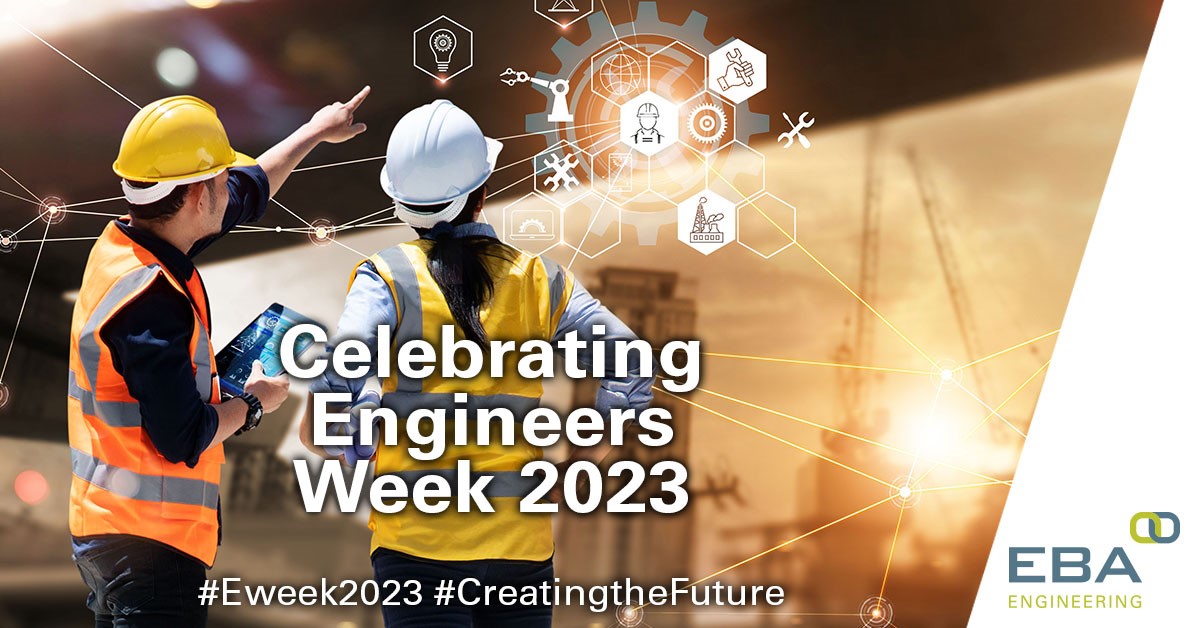Celebrating Engineers Week 2023

This week, the nation celebrates Engineers Week and recognizes the difference that engineers make in our world. In honor of the event, we asked our engineers to share their wisdom about the profession and what the future holds.
We started by exploring what leads people to choose the engineering field as a profession. Personality traits like creativity and a desire to fix the things around them seem to be the hallmarks of future engineers. Others also pointed to how much they enjoyed learning about fields like mathematics and science.
Kunal Gangopadhyay recalled taking a test in high school that revealed an aptitude for science and technology education. Also influenced by other positive engineering role models in his family, Kunal decided to pursue an education in engineering. This led to a decades-long career with EBA as one of our founding principals, where he has worked to solve real-life problems.
“My teachers in college told us that engineers can build for more what others can build for few. That phrase was very appealing to me,” said Kunal. “It convinced me that I chose the right path for my future.”
Redha Hasan, EBA’s materials testing department manager, chose engineering over other disciplines because he loves math and applying mathematical and scientific principles.
Redha also noted how important it is for engineers to be creative thinkers. “We are in a time of rapid social and technological changes, so the need for engineers to think creatively is greater now than ever before,” he said.
Senior project manager Richard Berich turned an interest in geology into a civil engineering career, where he enjoys the ability to apply both common sense and technical detail to a wide variety of projects.
When we asked our engineers what they can do now to help encourage and engage the next generation of engineers, the answers all centered on helping students understand what engineers do and the importance of engineering.
“Engineers have worked on enhancing our lives and living conditions,” said Kunal. “We can and should become the spokespersons of this message to encourage and motivate future generations to become engineers.”
Redha likewise encourages engineers to work with schools and other youth groups and to support opportunities for young people to learn about engineering and the STEM fields.
So what will be some of the biggest challenges for engineers in the future? Nearly all of our engineers pointed to keeping up with new technology and navigating the newest “trends” in the field as both a challenge and an opportunity.
Another challenge is innovating solutions to both local and global problems and supporting a better future for all. Therefore, while there are many challenges, Kunal felt like the biggest one is to “meet the needs of all in this world equitably.”
We also asked our engineers about some of their favorite project experiences, and it seems that our engineers like a challenge! Redha’s favorite project has been working on the Dulles Metrorail because of the many benefits it is bringing to the region. In addition to easing traffic congestion, the Silver Line expansion is providing new access for commuters, shoppers, tourists, and other travelers across the Washington, DC metropolitan area.
Richard has enjoyed applying GIS mapping and Landsat data to develop a hydrologic model of the Gunpowder River, which is on the western side of the Chesapeake Bay in Maryland.
Harish Patel, contract administrator, rose to the task of solving the many site challenges involved in a complex, multi-phase correctional facilities site development project.
Kunal also pointed to a particularly complex project as his favorite—the Port of Baltimore’s Seagirt Marine Terminal.
He explained that the terminal had to be built over a site with extremely soft sediment that was expected settle more than 6 feet over the next 10 years. His team worked with several other experts to address the site stabilization. He considers the complex terminal design to be one of his favorite project experiences.
Overall, one of the biggest takeaways is that engineers are making a difference in their communities. Engineers play a vital role in innovating solutions to global challenges that impact future generations.
“Our profession is constantly developing ways to improve our lives,” said Kunal. For example, engineers are designing and building sustainable habitats; developing ways to protect the “built environment” by using earth-friendly methods, such as recycling and reuse; and constantly pursuing new technologies that would allow us to live longer, more productive lives.
Redha added that engineers are making buildings safer and more resilient after natural disasters; developing new technologies to detect and treat diseases; and making sure those in the most remote communities can access food, water, and energy.
Harish said that engineers are providing better infrastructure, from access roads to utilities, to improve our lives. And as Richard put it simply: “engineers make things work and keep people safe.”
Thank you to all of our engineers and engineering staff for making your commitment count and making the world a better place to live!
Contributors: Richard Berich, Kunal Gangopadhyay, Redha Hasan, and Harish Patel
